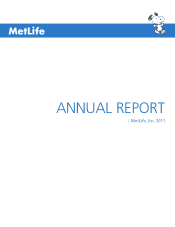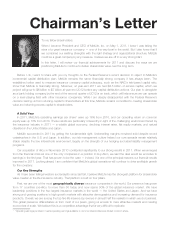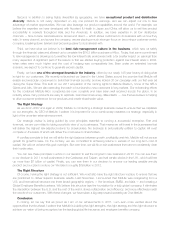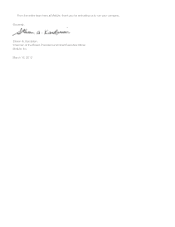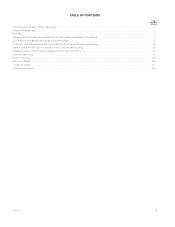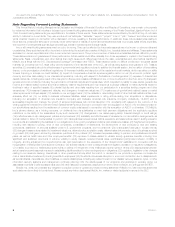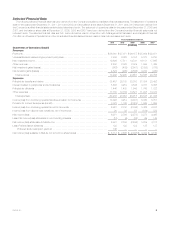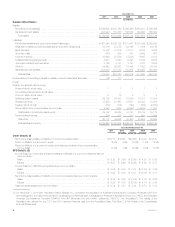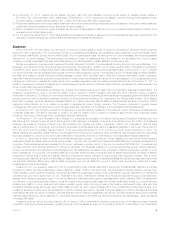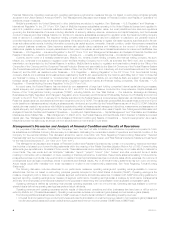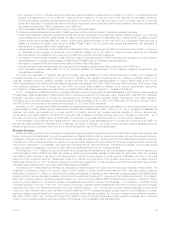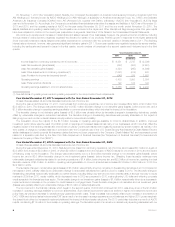MetLife 2011 Annual Report Download - page 2
Download and view the complete annual report
Please find page 2 of the 2011 MetLife annual report below. You can navigate through the pages in the report by either clicking on the pages listed below, or by using the keyword search tool below to find specific information within the annual report.
Chairman’s Letter
To my fellow shareholders:
When I became President and CEO of MetLife, Inc. on May 1, 2011, I knew I was taking the
reins of a great insurance company — one of the very best in the world. But I also knew that if
we combined our existing strengths with the right strategy and organizational structure, MetLife
could be a great company by any measure. I believe we are off to a very strong start.
In this letter, I will review our financial achievements for 2011 and discuss the ways we are
positioning MetLife to continue to deliver shareholder value over the long term.
Before I do, I want to share with you my thoughts on the Federal Reserve’s recent decision to object to MetLife’s
incremental capital distribution plan. MetLife remains the same financially strong company it has always been. The
established ratios used to measure insurance company capital adequacy, such as the NAIC’s risk-based capital ratio,
show that MetLife is financially strong. Moreover, at year-end 2011 we had $3.5 billion of excess capital, which we
project will grow to $6 billion to $7 billion at year-end 2012 before any capital distribution actions. Our plan to deregister
as a bank holding company by the end of the second quarter of 2012 is on track, which will help ensure we can operate
on a level playing field with other insurance companies. While I am deeply disappointed with the Federal Reserve’s
decision barring us from returning capital to shareholders at this time, MetLife remains committed to creating shareholder
value and returning excess capital to shareholders.
A Solid Year
In 2011, MetLife’s operating earnings per share1were up 16% from 2010, and our operating return on common
equity was up 10% from 2010. These results are particularly noteworthy in light of the challenging environment faced by
the insurance industry in 2011 — a volatile global economy, declining interest rates, flat equity markets, and natural
disasters in the United States and Japan.
MetLife succeeded in 2011 by getting the fundamentals right. Underwriting margins remained solid despite record
catastrophes in the U.S. and Japan. In addition, our risk management culture helped our core spreads remain relatively
stable despite the low interest-rate environment, largely on the strength of our hedging and asset-liability management
programs.
Our acquisition of Alico in November 2010 contributed significantly to our strong results in 2011. When we emerged
from the financial crisis as one of the only companies in a position to buy Alico, we said the deal would be accretive to
earnings in the first year. That has proven to be the case — indeed, it is one of the principal reasons our financial results
improved in 2011. Looking ahead, I am confident that MetLife’s global operations will continue to drive profitable growth
for the company.
Our Key Strengths
As I have been telling investors and analysts since last fall, I believe MetLife has the strongest platform for shareholder
value creation in the life insurance industry. That platform is built on four pillars.
First, we are one of the most geographically diverse insurance companies in the world. Our presence has grown
from 17 countries pre-Alico to more than 50 today and now spans 90% of the global insurance market. We have
leadership positions in the two largest insurance markets in the world — the United States and Japan. And we have
strong and growing positions in high-growth markets with attractive demographics and increasing demand for insurance
products. Overall, we are among the top five life insurers by revenue in almost half the markets in which we do business.
This global presence differentiates us from most of our peers, giving us access to more attractive markets and creating
economies of scale. We believe this is a competitive advantage that is very difficult to replicate.
1“Operating earnings per share” means operating earnings available to common shareholders per diluted common share.

